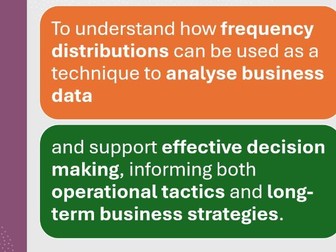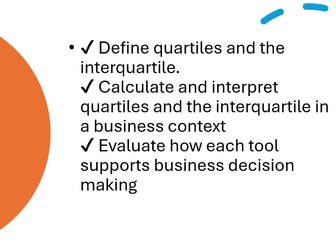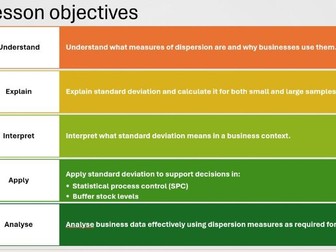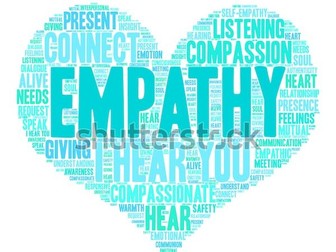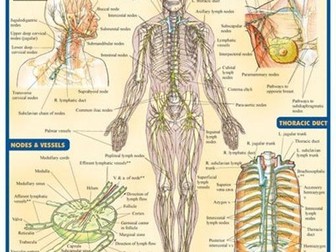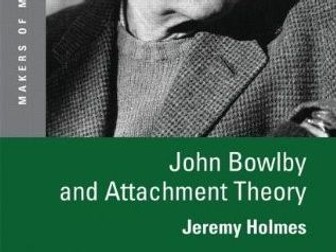Percentiles in Business
This lesson has been designed for International BTEC Level 3 Business Studies for Unit 7 Decision-Making in Business. (It can also be used for national).
It includes a powerpoint with:
step by step guide for learners to calculate percentiles
a graph interpretation activity with question sheet for the learners and teacher answer sheet.
A multiple choice quiz to consolidate understanding.


